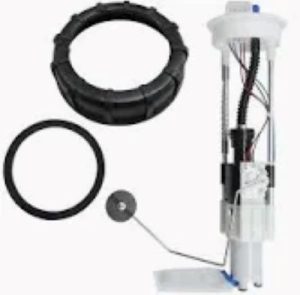Fuel pumps come in various grades, each designed for specific needs: certain vehicles, power, and operation requirements. They differ in pressure rating, durability, and general construction that could definitely affect efficiency, lifespan, and capacity to manage various fuel demands. The OEM standard fuel pumps are designed to meet factory specifications, typically delivering fuel normally at pressure levels between 40 and 60 PSI. These pumps usually are what a person wants for normal driving and a normal engine. With good maintenance, they could very well last beyond 100,000 miles.
Performance fuel pumps are designed to keep up with a high-performance or modified vehicle. With a rating in the neighborhood of-or higher than-80 PSI, these pumps provide fuel pressures that can handle turbocharged or supercharged engines due to the higher volumes of fuel beyond the capacity of a standard pump. Added to this are the high-quality materials such as anodized aluminum and stainless steel that performance pumps will utilize, which give increased durability and minimal wear under the most extreme conditions. It follows, therefore, from studies that performance pumps can increase horsepower up to 20% in conjunction with other upgrades, making it favorable among enthusiasts and for racing purposes.

Heavy-duty fuel pumps are for those trucks and other commercial vehicles operating under load or under very challenging conditions. These pumps balance both high flow rates and durability, as many heavy-duty pumps are designed for pressures of 60 PSI or more, even at the extreme ranges of temperatures. For those vehicles seeing lots of use in towing or heavy hauling, heavy-duty pumps provide added reliability and ensure one never sees a shortage of fuel to be delivered during stressful conditions. For this reason, fleet managers often favor these types of pumps over others, as it reduces the frequency at which they need to be serviced, prolonging the life of the fuel system and balancing the scales in terms of higher upfront cost with reduced downtime and fewer repair expenses.
Economy-grade pumps-those that can be had from the aftermarket-are suitable for the driver on a tight budget, where functionality but less durability is called for. Such pumps could work well for short-term applications but tend to be lightly built and operate at lower PSI ratings, usually in the neighborhood of 40 PSI. According to mechanics, economy-grade pumps are indeed cheaper; however, they may have a shortened life, up to half that of OEM-grade pumps, which makes them cost-effective but temporary solutions.
Selection of the correct grade Fuel Pump is based on specific vehicle requirements, intended use, and budget considerations. OEM pumps would suffice for regular driving, while for more demanding needs regarding optimal fuel delivery and engine support in various driving conditions, the answer lies with performance and heavy-duty pumps.